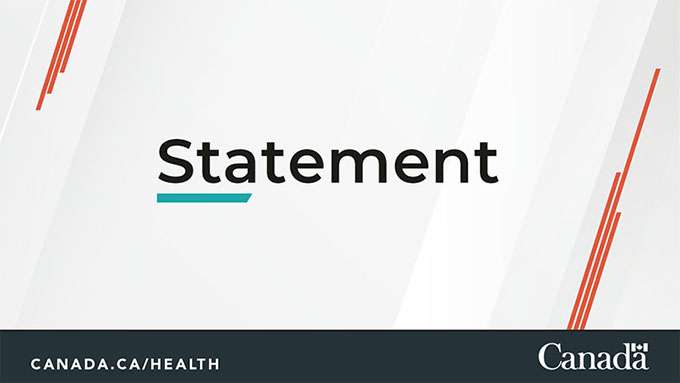Fitness
Message from the Minister of Health and the Minister of Sport and Physical Activity for Stroke Awareness Month

Statement
June 14, 2024 | Ottawa, Ontario | Public Health Agency of Canada
June marks Stroke Awareness Month in Canada, which is an opportunity for everyone to learn the signs and symptoms of a stroke and understand how we can reduce our risk of having a stroke.
A stroke is a sudden loss of brain function caused by a brain blood vessel blockage (ischemic stroke) or rupture (hemorrhagic stroke). It occurs when blood flow to a part of the brain stops, and the brain cells in the injured area become damaged or die. Symptoms can occur rapidly or they can progress over a few days.
Stroke continues to be one of the leading causes of death and disability in Canada. In 2021-2022, about 878,500 adults aged 20 years and older experienced a stroke. The signs of stroke are the same for men and women, although the prevalence of stroke is higher among men in Canada. Despite this, stroke disproportionately affects women since more women die of a stroke and face more challenges as they recover. Furthermore, women experience unique risk factors for stroke throughout their life, such as during reproductive age and around menopause.
The Government of Canada has undertaken many initiatives to demonstrate its commitment to addressing this cardiovascular disease. We are committed to working with multi-sectoral partners and provincial and territorial governments to support community-based initiatives to improve the health of all people living in Canada. The Healthy Canadians and Communities Fund invests approximately $20 million annually to support healthy living among people in Canada who face health inequalities and are at greater risk of developing chronic disease such as strokes. In addition, the Canadian Institutes of Health Research has invested more than $140 million over the last five years, in research to advance stroke prevention and treatment. For example, a research team at the Calgary Stroke Program is studying endovascular thrombectomy, a treatment with the potential to save millions of lives and improve the quality of life for stroke patients. At McMaster University, a team of researchers is testing whether blood thinners can prevent stroke among patients who develop an irregular heart rhythm after surgery. The Government of Canada also publishes a range of surveillance information on chronic diseases, including strokes, via the Canadian Chronic Disease Surveillance System (CCDSS).
Adopting a healthy and physically active lifestyle can reduce the risk of stroke. During Stroke Awareness Month, we encourage you to continue taking steps towards a healthier lifestyle. This can be done by limiting alcohol consumption, reducing stress, quitting smoking, eating nutritious foods, maintaining a healthy weight and being physically active. Together, let’s also commit to learning the signs and symptoms of a stroke so we can be prepared to act FAST. Knowing when to intervene can help protect yourself and your loved one – every minute counts in a stroke emergency.
- The Honourable Mark Holland, P.C., M.P.
- The Honourable Carla Qualtrough, P.C., M.P.
Contacts
Christopher Aoun
Press Secretary
Office of the Honourable Mark Holland
Minister of Health
613-291-4176
Renée LeBlanc Proctor
Senior Communications Advisor
Office of the Minister of Sport and Physical Activity
873-455-6498
renee.proctor@pch.gc.ca
Media Relations
Public Health Agency of Canada
613-957-2983
media@hc-sc.gc.ca
Media Relations
Canadian Heritage
1-819-994-9101
1-866-569-6155
media@pch.gc.ca


)






